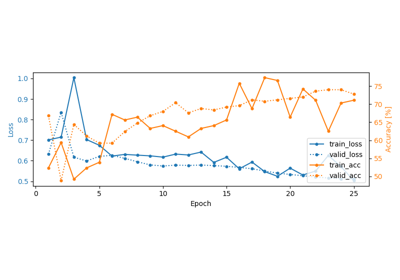braindecode.models.SleepStagerChambon2018#
- class braindecode.models.SleepStagerChambon2018(n_chans=None, sfreq=None, n_conv_chs=8, time_conv_size_s=0.5, max_pool_size_s=0.125, pad_size_s=0.25, activation=<class 'torch.nn.modules.activation.ReLU'>, input_window_seconds=None, n_outputs=5, drop_prob=0.25, apply_batch_norm=False, return_feats=False, chs_info=None, n_times=None)[source]#
Sleep staging architecture from Chambon et al. (2018) [Chambon2018].
Convolution

Convolutional neural network for sleep staging described in [Chambon2018].
- Parameters:
n_conv_chs (int) – Number of convolutional channels. Set to 8 in [Chambon2018].
time_conv_size_s (float) – Size of filters in temporal convolution layers, in seconds. Set to 0.5 in [Chambon2018] (64 samples at sfreq=128).
max_pool_size_s (float) – Max pooling size, in seconds. Set to 0.125 in [Chambon2018] (16 samples at sfreq=128).
pad_size_s (float) – Padding size, in seconds. Set to 0.25 in [Chambon2018] (half the temporal convolution kernel size).
drop_prob (float) – Dropout rate before the output dense layer.
apply_batch_norm (bool) – If True, apply batch normalization after both temporal convolutional layers.
return_feats (bool) – If True, return the features, i.e. the output of the feature extractor (before the final linear layer). If False, pass the features through the final linear layer.
n_channels (int) – Alias for n_chans.
input_size_s – Alias for input_window_seconds.
n_classes – Alias for n_outputs.
activation (nn.Module, default=nn.ReLU) – Activation function class to apply. Should be a PyTorch activation module class like
nn.ReLUornn.ELU. Default isnn.ReLU.
References
[Chambon2018] (1,2,3,4,5,6)Chambon, S., Galtier, M. N., Arnal, P. J., Wainrib, G., & Gramfort, A. (2018). A deep learning architecture for temporal sleep stage classification using multivariate and multimodal time series. IEEE Transactions on Neural Systems and Rehabilitation Engineering, 26(4), 758-769.
Methods
- forward(x)[source]#
Forward pass.
- Parameters:
x (torch.Tensor) – Batch of EEG windows of shape (batch_size, n_channels, n_times).
- Return type:
Examples using braindecode.models.SleepStagerChambon2018#

Self-supervised learning on EEG with relative positioning

Sleep staging on the Sleep Physionet dataset using Chambon2018 network